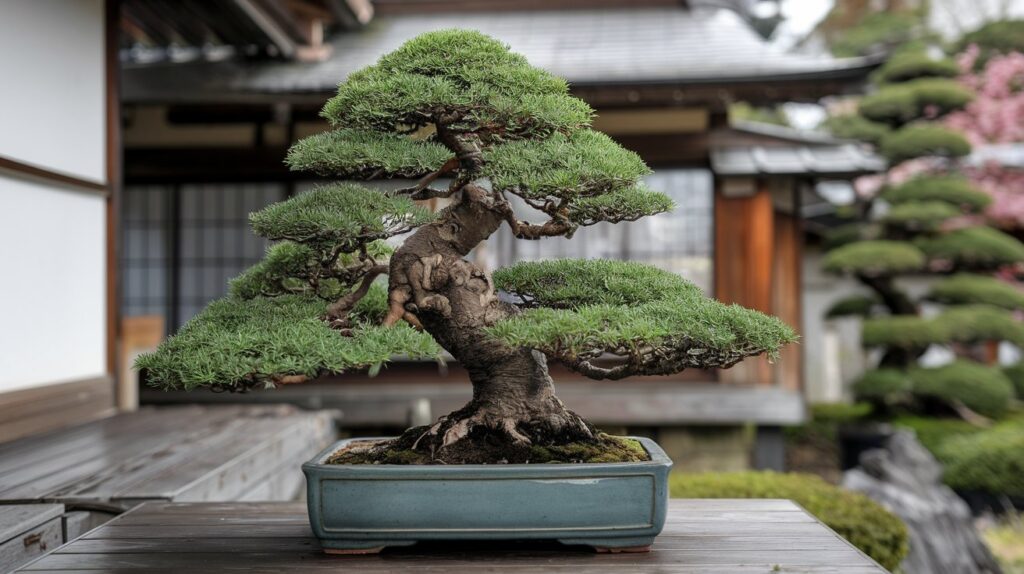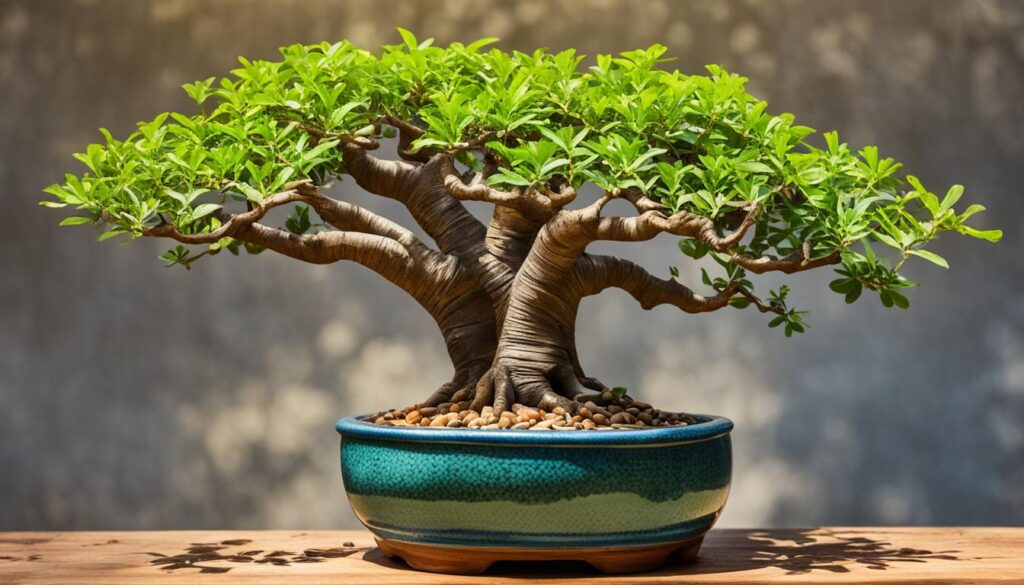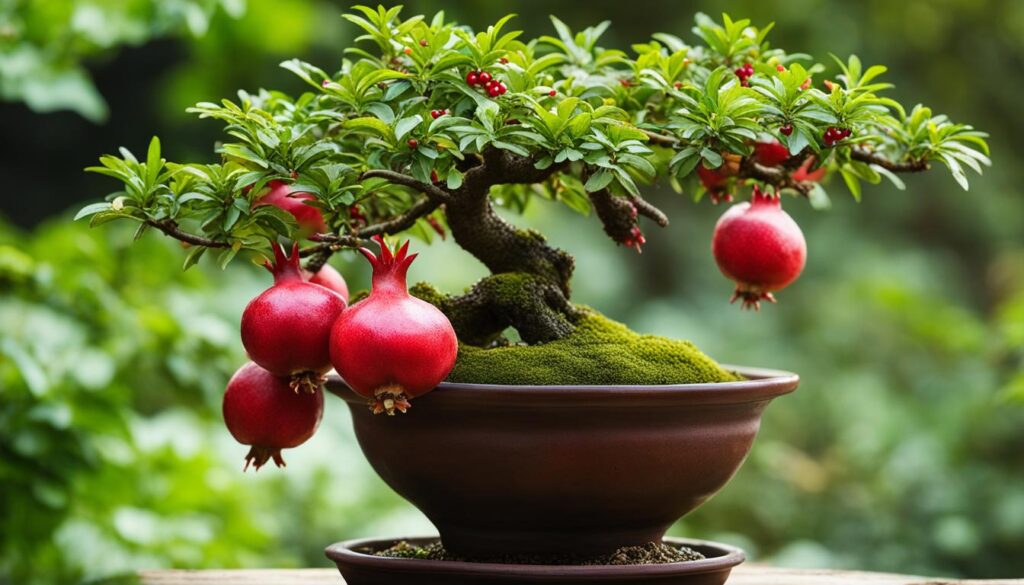Japanese Cedar Bonsai (Cryptomeria japonica) is a coniferous tree from East Asia, especially Japan. Even though it’s called “Japanese cedar,” it’s not a true cedar; it actually belongs to the Taxodiaceae family also known as swamp cypress family. This tree is known for its conical shape, reddish-brown bark that peels in strips, and wedge-shaped leaves that are green in summer and can turn bronze in winter.
Cryptomeria japonica is a favorite in the bonsai world because it’s both beautiful and adaptable. In the wild, this tree can grow over 180 feet tall, but as a bonsai, it’s kept much smaller. Its natural conical shape, thick trunk, intricate branches, and ability to bounce back and develop new buds make it a fantastic choice for bonsai enthusiasts.
Is Japanese Cedar Good for Bonsai?
Yes, Japanese Cedar is considered an excellent species for bonsai. Its vigorous growth and ability to adapt to various bonsai styles, such as formal upright, informal upright, and root-over-rock, make it a versatile choice.
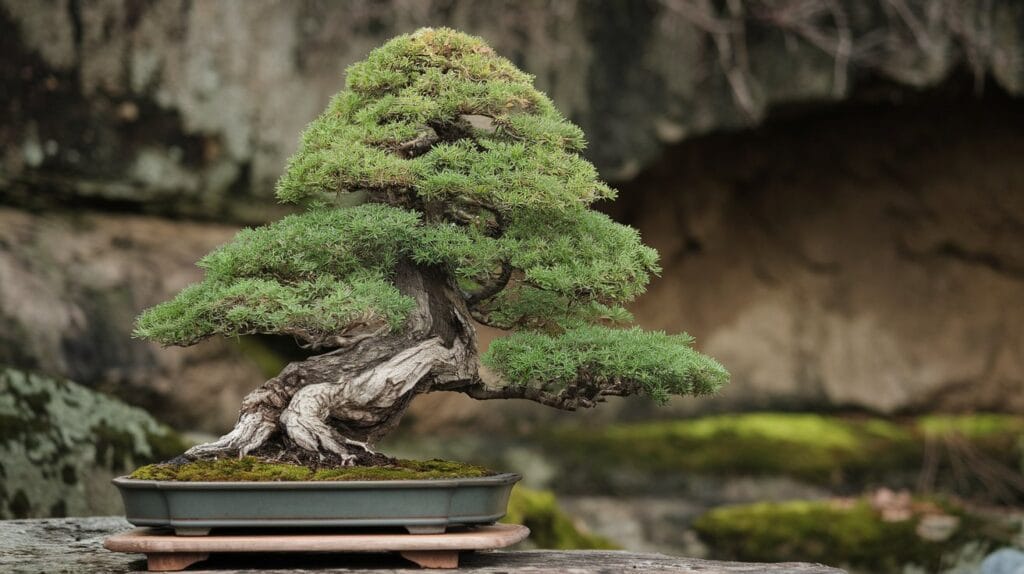
Key Takeaways
ToggleOverview of Different Types
Several cultivars of Cryptomeria japonica are popular among bonsai practitioners:
- Japanese Red Cedar Bonsai : This is the common name for Cryptomeria japonica, known for its rapid growth and attractive foliage. It is often used in various bonsai styles due to its robust nature and adaptability.
- Black Dragon Japanese Cedar Bonsai : This specific cultivar is noted for its dense growth and unique appearance, making it a favored choice for those looking to create striking bonsai displays. It typically has a compact form and is well-suited for smaller bonsai pots.
- Yatsubusa : A dwarf variety that is particularly popular for bonsai due to its small size and dense growth. It is ideal for creating intricate bonsai designs and can be styled in various ways while maintaining a compact form.
- Bandi-sugi : Another dwarf cultivar, Bandi-sugi is characterized by its slow growth and bushy appearance. It is excellent for beginners and those interested in smaller bonsai specimens.
How fast does Japanese Cedar Bonsai Tree Grows?
Japanese Cedar, or Cryptomeria japonica , is a fast-growing species. In its natural habitat, it can grow more than 180 feet tall, with young trees typically achieving growth rates of 2 to 4 feet per year when planted in suitable conditions. This rapid growth makes it an appealing choice for bonsai cultivation, as it allows for quick development of a mature appearance.
How to Care for Japanese Cedar?
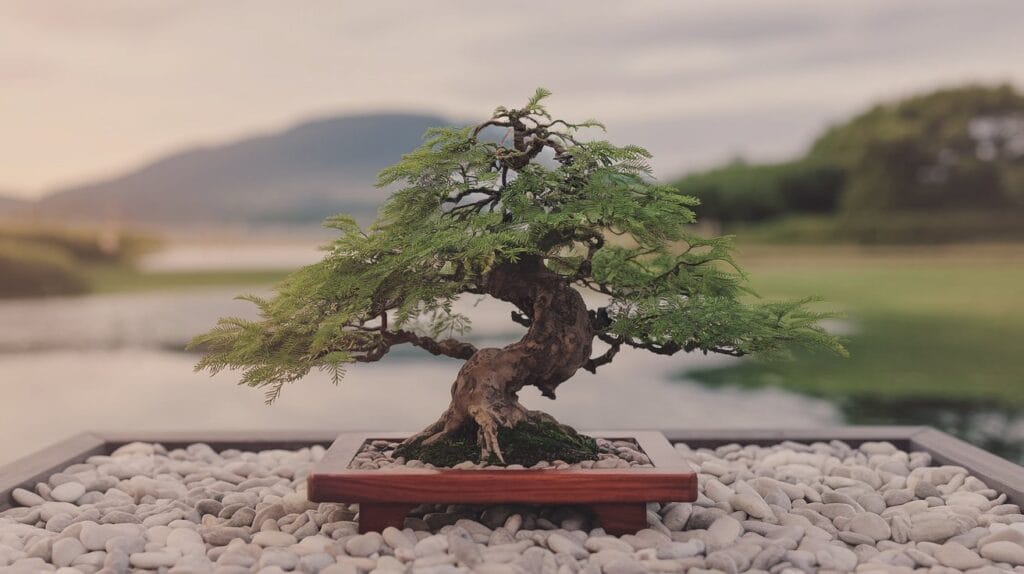
To care for Japanese Cedar bonsai effectively:
- Positioning : Place the bonsai in a location where it receives ample sunlight, ideally outdoors during warmer months.
- Watering Routine : Check the soil moisture regularly. Water thoroughly when the topsoil feels dry, ensuring the pot drains well to prevent standing water.
- Humidity : Maintain high humidity levels, especially if the bonsai is kept indoors. Misting the foliage or using a pebble tray can help increase humidity.
- Pruning and Wiring : Regularly pinch back new growth to encourage bushiness and maintain shape. Prune in early spring and wire young branches carefully to avoid damage.
- Repotting : Repot younger trees every two to three years using a suitable bonsai soil mix. Older trees require less frequent repotting.
Signs of Overwatering in Japanese Cedar Bonsai
Overwatering can lead to several issues in Japanese Cedar bonsai, including:
- Yellowing Leaves : Leaves may start to yellow and drop off if the roots are sitting in waterlogged soil.
- Wilting : Despite being overwatered, the tree may show signs of wilting due to root suffocation.
- Root Rot : A foul smell from the soil or mushy roots indicates root rot, which can be fatal if not addressed promptly.
Winter Care Tips for Japanese Cedar Bonsai Trees
During winter, Japanese Cedar bonsai requires special attention due to its sensitivity to frost. Here are some tips:
- Protection from Frost : Place the bonsai in a cold but frost-free greenhouse or indoors near a window to protect it from extreme cold.
- Humidity Maintenance : Continue to provide humidity, as indoor heating can dry out the air. Misting or using a humidity tray can help.
- Reduced Watering : Water less frequently during winter, allowing the soil to dry out slightly between waterings, but ensure it does not become completely dry.
Is Tansu Japanese Cedar Bonsai Indoor?
Tansu Japanese Cedar bonsai is generally considered an outdoor bonsai . While it can tolerate some indoor conditions, it thrives best outdoors where it can receive adequate sunlight and humidity. If kept indoors, it should be placed in a well-lit area and monitored closely for humidity and watering need.
Pruning Tips for Japanese Cedar Bonsai
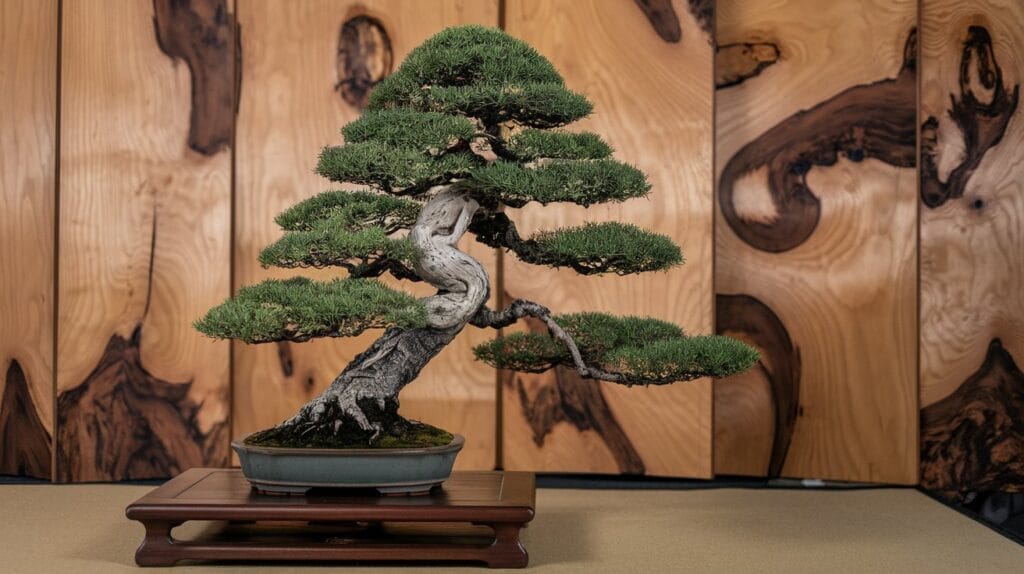
When pruning Japanese Cedar bonsai, consider the following tips:
- Timing : The best time to prune Japanese Cedar is from mid-spring to summer. Avoid pruning in winter, although dead or diseased branches can be removed year-round.
- Pinching : To promote a fuller and bushier appearance, pinch off new growth rather than cutting it. This technique is particularly effective for conifers like Japanese Cedar, as it encourages denser foliage.
- Cutting Techniques : Always leave some needles on the branches when pruning. Removing all needles can lead to branch dieback. When cutting, use sharp tools to make clean cuts, and consider using concave cutters for larger branches to minimize scarring.
- Avoid Over-Pruning : Never remove more than one-third of the tree’s foliage in a single season. This helps prevent stress and promotes healthy regrowth.
Managing Growth and Shape
To effectively manage the growth and shape of Japanese Cedar bonsai:
- Regular Monitoring : Observe your bonsai regularly to assess its growth patterns. This will help you determine when and where to prune.
- Encouraging Inner Growth : Focus on pruning the top and outer branches more aggressively to redistribute growth to the inner parts of the tree. This technique counters the natural phenomenon of apical dominance, where the main stem grows more aggressively than side branches.
- Improving Airflow : Remove overlapping branches in the center of the tree to enhance airflow. This practice helps prevent fungal diseases and pest infestations.
- Seasonal Adjustments : Adapt your pruning techniques based on the season. For instance, perform more extensive structural pruning in winter while focusing on maintenance pruning during the growing season.
How to Propagate Japanese Cedar Bonsai from Cuttings
Propagating Japanese Cedar (Cryptomeria japonica) bonsai from cuttings is a popular and effective method. Here are the steps to successfully propagate from cuttings:
- Select healthy, vigorous branches from the parent tree in late summer or early fall. Choose branches that are about 3-4 inches long and 1/8 inch thick.
- Make a clean cut just below a leaf node using sharp, sterile pruners. Remove the lower leaves, leaving only the top third of the cutting.
- Dip the cut end in rooting hormone powder to encourage root growth.
- Plant the cutting in a well-draining potting mix in a container with drainage holes. Firm the soil around the base of the cutting.
- Water thoroughly and place the container in a warm, humid environment with bright, indirect light. Avoid direct sunlight.
- Monitor the soil moisture and keep it consistently moist but not waterlogged. Mist the foliage regularly to maintain humidity.
- After several weeks to months , check for root development by gently tugging on the cutting. If there is resistance, roots have formed.
- Once rooted, transplant the cutting into a larger container with bonsai soil mix. Gradually acclimate it to more sun and lower humidity.
Fertilizing Schedule for Japanese Cedar Bonsai
Japanese Cedar (Cryptomeria japonica) bonsai should be fertilized regularly during the growing season to maintain healthy growth and development. Follow these guidelines:
- Early Spring : Apply a balanced fertilizer to provide a boost of nutrients for new growth.
- Mid-Spring to Summer : Use a fertilizer with a higher nitrogen content (10-6-6 or 12-4-8) every 4-6 weeks to encourage foliage and branch development.
- Late Summer to Fall : Switch to a fertilizer with lower nitrogen and higher phosphorus and potassium (5-10-5 or 6-10-6) to promote root growth and prepare the tree for winter.
- Winter : Avoid fertilizing during the dormant season.
How to Prevent Pests on Japanese Cedar Bonsai
Maintaining a healthy bonsai tree is the best defense against pests. Here are some tips to prevent infestations:
- Provide proper care : Ensure the tree receives adequate sunlight, water, and nutrients to maintain its vigor.
- Practice good hygiene : Remove dead or dying foliage and branches regularly to eliminate potential breeding grounds for pests.
- Monitor regularly : Inspect your bonsai frequently for signs of pest activity, such as webbing, discolored leaves, or visible insects.
- Use organic pest control methods : If pests are present, try using insecticidal soaps, neem oil, or horticultural oils to eliminate them without harming the tree.
Common Pests in Japanese Cedar Bonsai
Japanese Cedar bonsai may be susceptible to various pests, including:
- Spider mites : These tiny pests feed on the sap of the leaves, causing them to turn yellow or brown.
- Scale insects : These small, flat insects attach themselves to the branches and leaves, sucking the sap and causing the foliage to wilt.
- Aphids : These soft-bodied insects feed on the new growth, causing distorted leaves and stunted development.
- Bark beetles : These insects bore into the bark and wood of the tree, causing damage to the vascular system and potentially killing the tree.
Common Problems and Solutions for Japanese Cedar Bonsai
Japanese Cedar bonsai may encounter several leaf-related issues:
- Browning Leaves : Leaves turning reddish-brown in winter is normal, but unseasonal browning, especially of interior foliage or leaf tips, may indicate a fungal disease. Ensure proper air circulation and consider using a fungicide if needed.
- Yellow Leaves : Yellow leaves can be a sign of over-watering, leading to root rot. Check the soil moisture and allow it to dry out slightly between waterings. Yellow leaves may also indicate nutrient deficiencies, in which case fertilizing may help.
- Wilting or Crispy Leaves : Wilting or crispy leaves are a sign of under-watering. Water the bonsai thoroughly, allowing the soil to absorb moisture without becoming waterlogged.
- Leaf Scorch : Leaf scorch, characterized by brown or bleached leaves, can occur when the bonsai receives too much direct sunlight. Move the tree to a spot with filtered sun or create shade using a cloth.
Drought Resistance in Bonsai Trees
Japanese Cedar bonsai are relatively drought-resistant once established, but proper watering is still crucial, especially for young trees. Here are some tips for maintaining drought resistance:
- Use well-draining soil that retains moisture without becoming waterlogged.
- Water deeply and thoroughly when the soil begins to dry out, allowing the roots to absorb moisture.
- Mulch around the base of the tree to retain soil moisture and suppress weeds.
- Prune and wire the tree to maintain a compact, dense canopy that reduces water loss through transpiration.
Troubleshooting Growth Issues
If your Japanese Cedar bonsai is not growing as expected, consider the following:
- Insufficient Light : Pale leaves and stunted growth can indicate a lack of light. Move the bonsai to a brighter location that receives at least six hours of direct sunlight per day.
- Nutrient Deficiencies : Slow growth or yellowing leaves may be caused by nutrient deficiencies. Apply a balanced fertilizer during the growing season and adjust the soil pH if necessary.
- Root Rot : If the tree is not growing well despite proper watering and light, check for root rot. Gently remove the tree from its pot and inspect the roots. Brown or mushy roots indicate a problem that requires immediate attention.
Conclusion
In conclusion, Japanese Cedar Bonsai, especially the Cryptomeria japonica species, offers a rewarding challenge for bonsai enthusiasts. With the right care—proper light, soil, watering, thoughtful pruning, and pest management—these evergreens can thrive and become a stunning part of any collection. Whether you’re a seasoned bonsai artist or just starting out, understanding the specific needs of Japanese Cedar Bonsai will help you nurture a healthy, vibrant tree that beautifully showcases the art of bonsai.
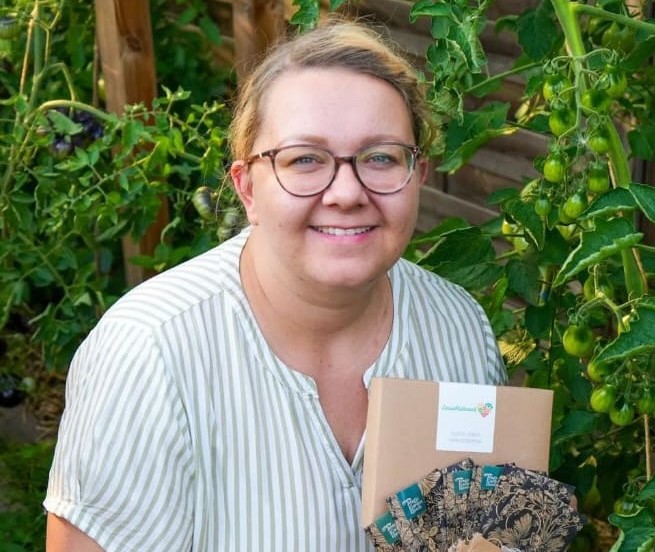
Karen Phillips, Bonsai expert and blogger. Read more about me here

